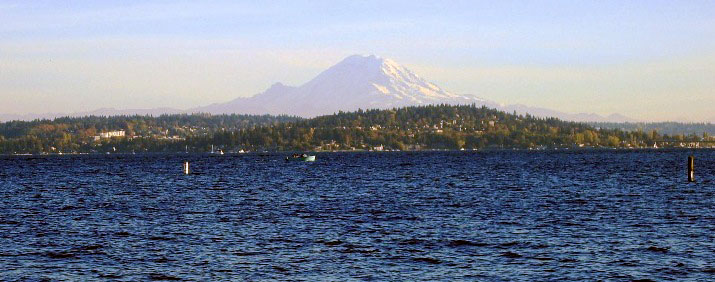Urban Earthcache - Vashon Ice Sheet EarthCache
This cache has been locked, but it is available for viewing.
Urban Earthcache - Vashon Ice Sheet
-
Difficulty:
-

-
Terrain:
-

Size:  (not chosen)
(not chosen)
Please note Use of geocaching.com services is subject to the terms and conditions
in our disclaimer.
The immediate vicinity is a grassy beach on the second largest natural lake in the state of Washington. While you are in the area, make sure to check out the other nearby Madison Park caches. Please note: this is the only spot on Lake Washington that counts for the cache.

When most people think of glacially carved lakes, they imagine small, crystal clear mountain lakes. This is not the case for Seattle's largest lake, however.
Geological Formation:
Lake Washington was carved out by the Vashon Ice Sheet - the last continental glacier to move through the Seattle area over 10,000 years ago.
Okay, fine. What does that mean to me? What is a glacier? According to the USGS website (http://ga.water.usgs.gov/edu/earthglacier.html): "...glaciers are just frozen rivers of ice flowing downhill. Glaciers begin life as snowflakes. When the snowfall in an area far exceeds the melting that occurs during summer, glaciers start to form. The weight of the accumulated snow compresses the fallen snow into ice. These "rivers" of ice are tremendously heavy, and if they are on land that has a downhill slope the whole ice patch starts to slowly grind its way downhill. These glaciers can vary greatly in size, from a football-field sized patch to a river a hundred miles long."
In our case, as gravity moved the Vashon Ice Sheet downwards from the Cascade Mountains, it excavated a deep, narrow trough along the path. Over time, the glacier melted, and the hole that it left was filled with melting water from the Cascade Mountains, via rivers and streams such as the Cedar and Sammammish Rivers. Water from the lake flows out through the Ship Canal into the Puget Sound (which was also carved by glacial activity.)
Today, Lake Washington's maximum depth is around 214 feet deep, with an average depth of 108 feet. This causes the water to be colder than most (shallower) lakes. The lake is 22 miles long, with a drainage area of 472 square miles and a volume of 2.35 million acre-feet.
Water Clarity:
In the 1960's, Lake Washington was considered eutrophic, which means that it contained high levels of phosphorus and chlorophyll. There was significant algae growth due to treated sewage (effluent) contaminating the lake, with thick masses of a type of invasive algae near the surface. Visibility was as low as 30 inches deep. In 1968, after 10 years and the most expensive pollution control measure in the country at the time, construction completed on diversion facilities that transported sewage to two new plants at West Point and Renton. Almost overnight, effluent was reduced from 20 million gallons per day down to zero discharge, resulting in decreased phosphorus levels which eliminated the invasive algae.
Today, Lake Washington is considered mesotrophic, meaning that it contains moderate concentrations of nutrients and biological activity, with intermediate levels of phosphorus and chlorophyll. Visibility is now as deep as 25 feet!
Did you make it this far? Well good! No, this is not your stereotypical small, crystal clear glacial mountain lake. While you are here, look into the water to see how clear it is today, and imagine how time has changed what we now know as Lake Washington.
UPDATED 10/2006 and 5/2011: According to the new EarthCache rules, I had to implement a change in the logging process. To claim this cache:
1) Email me with your estimate of the width of the lake at this point, as well as the name of the glacier that carved this lake.
2) The previous request to post a picture to your log at this site is now optional.
3) No need to wait for email confirmation to log this Earthcache. Log it as found and send me your email when you can, preferably within a week
Please note that dogs are not allowed at Seattle beach parks, and beach hours are from 11am to 7pm.
Sources:
United States Geological Society website: http://ga.water.usgs.gov/edu/earthglacier.html
King County website: http://www.kingcounty.gov/
Additional Hints
(No hints available.)
Treasures
You'll collect a digital Treasure from one of these collections when you find and log this geocache:

Loading Treasures